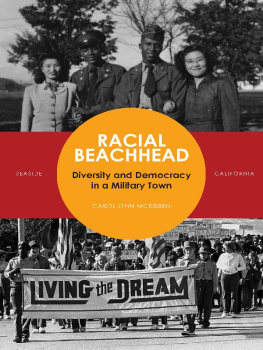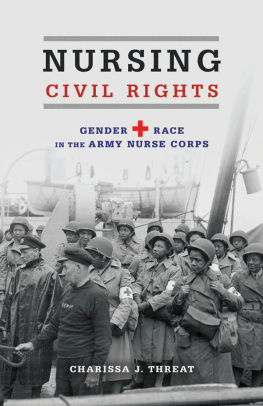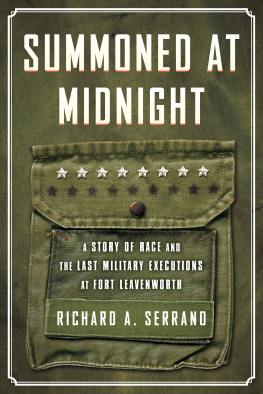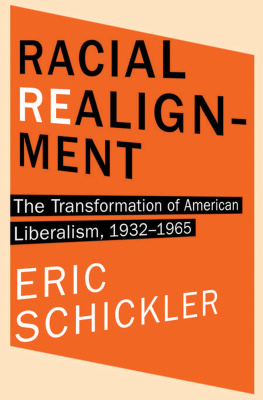Stanford University Press
Stanford, California
2012 by the Board of Trustees of the Leland Stanford Junior University. All rights reserved.
No part of this book may be reproduced or transmitted in any form or by any means, electronic or mechanical, including photocopying and recording, or in any information storage or retrieval system without the prior written permission of Stanford University Press.
Printed in the United States of America on acid-free, archival-quality paper
Library of Congress Cataloging-in-Publication Data
McKibben, Carol Lynn, 1955 author.
Racial beachhead : diversity and democracy in a military town / Carol Lynn McKibben.
pages cm
Includes bibliographical references and index.
ISBN 978-0-8047-7698-1 (cloth : alk. paper)
ISBN 978-0-8047-7699-8 (pbk. : alk. paper)
1. Seaside (Calif.)Race relationsHistory20th century.
2. Fort Ord (Calif.)Race relationsHistory20th century.
3. African AmericansCaliforniaSeasideHistory20th century.
4. MinoritiesCaliforniaSeasideHistory20th century.
5. Military townsSocial aspectsUnited States.
6. Military townsUnited StatesHistory20th century.
7. Seaside (Calif.)Social conditions20th century. I. Title.
F869.S594M349 2012
305.896073079476dc23
2011027431
Typeset by Thompson Type in 10/15 Sabon
E-book ISBN: 978-0-8047-7844-2
Acknowledgments
I AM HUMBLED by the people I met in Seaside. I learned so much from the women and men who lived this history. My understanding of race relations in America at midcentury and the full meaning of what the military embodies in American life became real to me in a way that I never expected when I began this project in the fall of 2005. At that time Seaside was in transition, from military town to resort community and tourist destination. I was in transition too. I had just published a book on Sicilian immigrants in Monterey and wanted to expand my work to include more comparative analyses of ethnic and race relations. With the help and guidance of Al Camarillo, Professor of History at Stanford University, Ray Corpuz, City Manager of Seaside, and historian Becky Nicolaides, I was able to do just that.
Professor Camarillo included me in a research project on minority majority cities in California that helped me put this history of Seaside into the broader perspective of urban California. He showed me the importance of writing histories of communities that had been dismissed as crime and drug ridden and unworthy of attention or economic investment, primarily because the majority of residents in these places were minorities and poor. His work proves there is more to these communities than crimes or drugs and sensational reporting in the media; his passion for his work was infectious and inspiring throughout the course of this project.
Ray Corpuz, who had been looking in vain for a history of the city he managed, was also incredibly supportive of the notion of writing a history of the town that would integrate Seaside alongside the history of the Monterey Peninsula and urban California and taught me so much about city government and good governance in the most challenging of circumstances.
Becky Nicolaides read early versions of this manuscript when it counted the most, and gave me critical feedback, from sharpening my argument to reorganizing the work. She has become a dear friend.
I began my research from scratch because historians of Monterey and its environs had long ignored the history of Seaside. The challenges were immense. There was no archive or local collection of history that served as a central place for research. Sources were scattered among residents, in their minds eyes and in their garages, and casually collected but in disarray in bags and boxes in a dilapidated and mold-filled house in Seaside that served as headquarters for the Seaside Historical Commission, whose main function was to preserve the memory of its nineteenth-century founder Dr. John Roberts, and doing Christmas art projects to raise money. There was concern among the commissioners that any history of the city would expose racial tensions and the dark side of military town life and would be an embarrassment to the people of Seaside.
However, residents and former residents of SeasideRichard Joyce, Lenora Bean, Don and Alice Jordan, William Melndez, Ruthie Watts, Mel Mason, Ewalker James, Helen Rucker, Morris and Bobbie McDaniel, Jerry Smith, Brenda Thomas, Andy Yoshiyama, Emerson Reyes, Ralph Rubio, Al Glover, Estela and Patrick McKenzie, Nancy Towne, Rosa Snchez, Sergio Rangel, Hector Azpilcueto, Sherman and Elizabeth Smith, former city council members and staff too numerous to mention, and so many, many othersthought otherwise. Besides sharing their stories, Seaside residents taught me how to navigate the political waters of their city, introduced me to friends and relatives who had stories to share, and encouraged me to complete this work wherever it might lead. I am immeasurably grateful to each one of them.
I am grateful for the support of the Seaside City Council, 20052009, Stanford University, the California Council for the Humanities, the Community Foundation for Monterey County, and the Monterey Peninsula Foundation. All provided much needed funding support to make this project possible. Because of their support, our history project was able to host a number of community events from Speaking History forums to photo days that were as critical to the history project as researching and writing this book. These events raised awareness about Seaside history throughout the Peninsula. It was because of these events that much of the archive now available through Oldemeyer Center was assembled.
No one could write anything without the help of research librarians and archivists. I am incredibly grateful for the research help, advice, critiques, and support Dennis Copeland, archivist and historian for the Monterey Public Library, has given to me over the years. The staff of librarians at the Monterey Public library are wonderful, especially Sarah Stewman, who patiently tracked down a source for me at the last minute. I am also grateful for research help from Kurt Kuss, California archivist, Defense Language Institute, Foreign Language Center, Historic Research Collection, Chamberlin Library.
My colleagues in the history department at Stanford University provided the most supportive and collegial environment imaginable, and many of them have become good friends as well. Al Camarillo, Zephyr Frank, Allyson Hobbs, and Gordon Chang read parts or all of the manuscript and gave me the most constructive feedback. I am thankful for the support and encouragement of, Paula Findlen, Richard White, Jim Campbell, Caroline Winterer, Richard Roberts, Estelle Freedman, and others who welcomed me into this extraordinary intellectual environment. I am also indebted to Quintard Taylor, Carl Abbott, Janet Bednarek, Lori Flores, and Shana Bernstein for reading my work and helping me refine the argument and organize the material better. Mark Wild and the anonymous reader at Stanford Press gave me invaluable feedback, which helped in the last stages of revisions and for which I am enormously grateful.
I thank my editors at Stanford Press, Kate Wahl and Joa Suorez, for sticking with me from the inception to the finish and seeing this project through. They have been a source of support throughout, but especially wonderful as this work neared completion. I also thank my editor, Margaret Pinette, whose work and support in the final stages was invaluable. I thank Chris Eberhart, Tracy Kegelman, and Lauren Wilkins for their incredible help with indexing.








